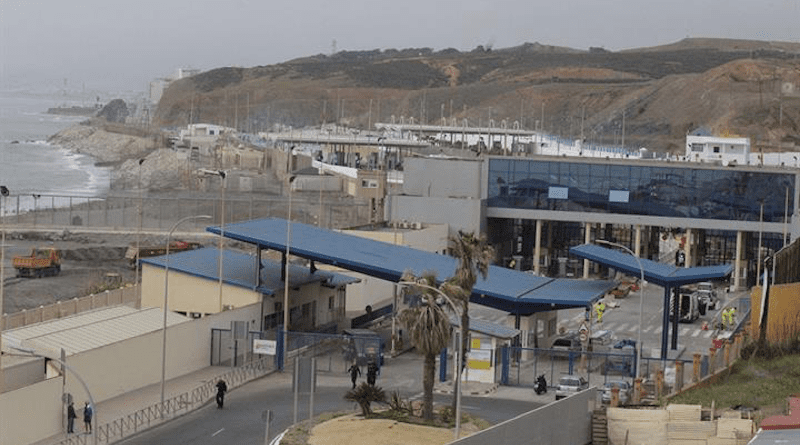Across The Strait: Bordering Regimes, Operation Marhaba, And Morocco’s Role As A Transit Country – OpEd
By Addie Simkin
There are two primary stakeholders to borders: one is the nation-state, whose sovereignty—and responsibility to its people—extends to its borders; the other are the people, who have a human right to mobility and whose passage is mediated and limited by borders. The case of migration from Morocco to Spain exemplifies the tension between state and individual actors.
Operation Marhaba is a partnership between Morocco and Spain that seeks to regulate this flow of migration. From June 5 to September 15 each year, Moroccan humanitarian services mobilize medical, transportation, and administrative personnel to support thousands of migrants as they cross the Mediterranean. Border control and regular migration helps ensure the safety of migrants; however, it also limits their mobility. The use of border control as a foreign policy tool can strand migrants in Morocco for years longer than they intended to stay. Humanitarian organizations in Morocco need to consider migrant communities, even and especially temporary migrant communities, integral members of Moroccan society.
To grasp the dynamics of border control between Morocco and Spain, it is important to recognize Morocco’s geospatial importance. Morocco sits at the nexus between Africa and Europe, which means it has the power to gatekeep African migration to the European Union. The EU outsources migration control to Morocco via aid agreements; for example, the 2019 “Joint declaration by the European Union and Morocco for the fourteenth meeting of the Association Council” contends that “specific operational measures will also be carried out” in the key field of “enhanced consultation and balanced cooperation on mobility and migration:” essentially, the EU will increase consultation in Morocco’s migration policies. The EU—and its member state Spain—have an interest in preventing migrants from leaving Morocco.
Meanwhile, the Moroccan government can employ border control as a foreign policy tool: last year, Spain hosted the Polisario leader Brahim Ghali for hospitalization; in response, Morocco excluded Spain from Operation Marhaba in 2021; instead, Morocco allowed irregular migrants to travel to Spain. This year, Operation Marhaba has returned with the normalization of Moroccan-Spanish relations. This is to say that migration policies are volatile; the migrant’s mobility is threatened by the geopolitical whims of Morocco and Spain.
The consequences of the reimplementation of Operation Marhaba are damaging to migrant communities in Morocco. Because entry to Spain is more heavily regulated, migrants are stuck here; Chaimae Makhtoum, a law student from the Institut Superieur de l’Information et de la Communication, notes that refugees and migrants are funneled to major cities like Fes, where they form camps near train stations. Makeshift camps make migrants more vulnerable to both disease and human traffickers.
Some people try to migrate irregularly, circumventing or opposing border regimes. Just last month, at the border between Morocco and the Spanish enclave city Melilla on June 24th, 2022, at least 23 migrants died as they attempted to enter Spain. A movement of 2,000 people participated in that attempted border crossing; footage from the event shows security forces launching tear gas, throwing stones, and beating migrants. This event reveals the consequence of the tension between state sovereignty and human mobility: state violence against people who need to cross borders. The right to mobility of the migrants in Morocco is repressed by border enforcement.
Since borders will remain for the epistemologically thinkable future, the purview of civil society and humanitarian organizations in Morocco is to support migrant communities here. The High Atlas Foundation and other humanitarian organizations who are concerned with Moroccan participatory development need to prioritize migrant communities as integral constituents of Morocco’s diversity. Reprioritizing migrant communities in the methodology of participatory development aligns with the philosophy of participation. I
n Methods for Community Participation, Somesh Kumar advises that underrepresented voices should be elevated in community decision making. Participatory development seeks to undermine hierarchies of power. The hierarchy of belonging is measured in history and integration. We must come to embrace that everyone in Morocco, both those who have been here for time immemorial and those who have arrived in the last decade, has a history; and that all of those histories contribute to Morocco’s diverse society for the time that they are here.
Borders protect the sovereignty of states by infringing upon human mobility. The volatility of the Moroccan-Spanish border as it is employed as a foreign policy tool makes it especially difficult for migrants to navigate. Regular migration can take years, and the alternative, irregular migration, is dangerous. In its role as a transit country, Morocco and humanitarian organizations here need to offer more services to migrant families: education, healthcare, employment resources, and housing are all critical for people’s quality of life. The first step to delivering these needs to migrant communities is integrating them into Moroccan society and reconceptualizing migrant as underrepresented voices in Moroccan communities.
Addie Simkin is a Global Studies major at the University of Virginia and an intern at the High Atlas Foundation.

